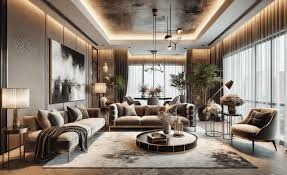The restaurant industry stands as one of the most competitive and artistically challenging business sectors, where success often hinges on the ability to create a captivating dining environment. The importance of hospitality fitout in the restaurant business cannot be overstated. Designing a space that is not only aesthetically pleasing but also functional and cost-effective requires a deliberate and well-thought-out strategy. In this article, we delve into the essentials of crafting a space that speaks the language of hospitality and invites patrons to immerse themselves in a unique dining experience.
Understanding the Concept of Hospitality Fitout
The term ‘hospitality fitout’ refers to the process of transforming an interior space to meet the specific needs and aspirations of a hospitality business, including restaurants, hotels, cafes, and bars. It encompasses everything from structural modifications and furniture selection to lighting design and decor. Striking the perfect balance between form and function lies at the core of a successful hospitality fitout, which ultimately shapes the customer’s experience.
Importance of a Tailored Approach
To truly master the art of hospitality fitout, one must understand the unique identity of the restaurant and the audience it seeks to attract. This individualised approach ensures that each design element, from the seating arrangement right through to the kitchen layout, aligns with the overall concept and operational needs of the establishment.
Creating a Visually Appealing Environment
Aesthetics play a critical role in restaurant design. An inviting ambience that aligns with a restaurant’s theme can greatly influence a patron’s perception and enjoyment of their dining experience. Colour schemes, materials, and décor elements should come together to form a cohesive visual narrative that enhances the brand’s identity.
Functional Design is Key
While aesthetics is important, functionality is equally crucial in a restaurant’s layout. The flow of movement for both customers and staff should be carefully planned to avoid congestion and to ensure smooth operation. This includes considering kitchen placement, service paths, and dining areas to optimise efficiency and customer satisfaction.
Integrating Technology in Modern Fitouts
Modern hospitality fitouts now frequently incorporate advanced technology to streamline operations and enhance the guest experience. From digital ordering systems to kitchen automation, integrating technology can lead to greater efficiency and provide a contemporary edge to the establishment.
Attention to Detail: Lighting and Acoustics
Lighting and acoustics are additional, yet critical components of restaurant design. The right lighting can set the mood and highlight architectural and design features, while good acoustics can ensure that the atmosphere remains conducive to dining and conversation.
The Role of Sustainable Design
The sustainability movement has significantly impacted restaurant design. Implementing energy-efficient appliances, using recyclable materials, and minimising waste are all part of designing with the environment in mind. Sustainable practices not only reduce long-term operational costs but also appeal to the eco-conscious consumer.
Staying Ahead of Trends
Given the ever-evolving nature of the hospitality industry, staying informed of the latest design trends is vital. However, it is equally important to discern which trends can be enduring and how they can be adapted to reinforce the unique selling points of the restaurant.
The Role of Professional Fitout Services
Given the complexities involved in creating a restaurant space that is both beautiful and practical, many restaurateurs turn to professional fitout services. An experienced fitout team can manage all aspects of the design and construction process, ensuring that the project is completed efficiently, within budget, and to the highest standard.
Maximising Space and Budget
With real estate at a premium, particularly in urban areas, maximising space utilisation is a priority within hospitality fitout projects. Designers need to be innovative in their approach to space planning, ensuring that every square metre serves a purpose. Budget management also plays a significant role, requiring careful planning and prioritisation of expenditure to achieve the best outcomes within financial constraints.
Creating a Memorable Experience
Ultimately, the success of any hospitality fitout lies in its ability to provide a memorable experience for guests. This not only depends on the aesthetic and practical considerations of design but also on capturing the essence of the dining ethos and delivering it consistently through every facet of the fitout.
READ MORE : Robot Vacuum Maintenance: Tips and Tricks
Conclusion
Mastering the art of hospitality fitout is a multifaceted endeavour that requires a strategic blend of creative design, technological integration, and operational efficiency. As the restaurant industry continues to evolve, those who pay close attention to the details of their environment and keep the customer’s experience at the forefront of their design choices will thrive. Whether it’s through innovative use of space, embracing sustainable practices, or incorporating the latest technological advancements, an exceptional fitout can transform an ordinary space into an extraordinary dining destination.
For restaurateurs looking to create an impactful dining environment, understanding the principles highlighted in this article is essential. Engaging with reputable providers of hospitality fitout services can help to ensure that your restaurant not only meets but exceeds the expectations of your guests, providing a strong foundation for business success and longevity.
